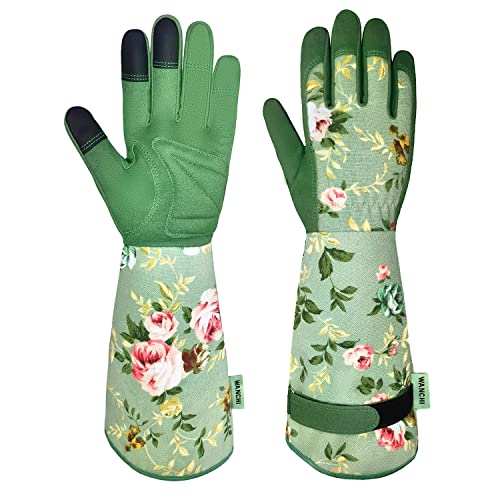Best spring-flowering shrubs – 12 choices to infuse your yard with seasonal color
These spring blooms will bring your backyard to life after the darker days of winter

Tenielle Jordison
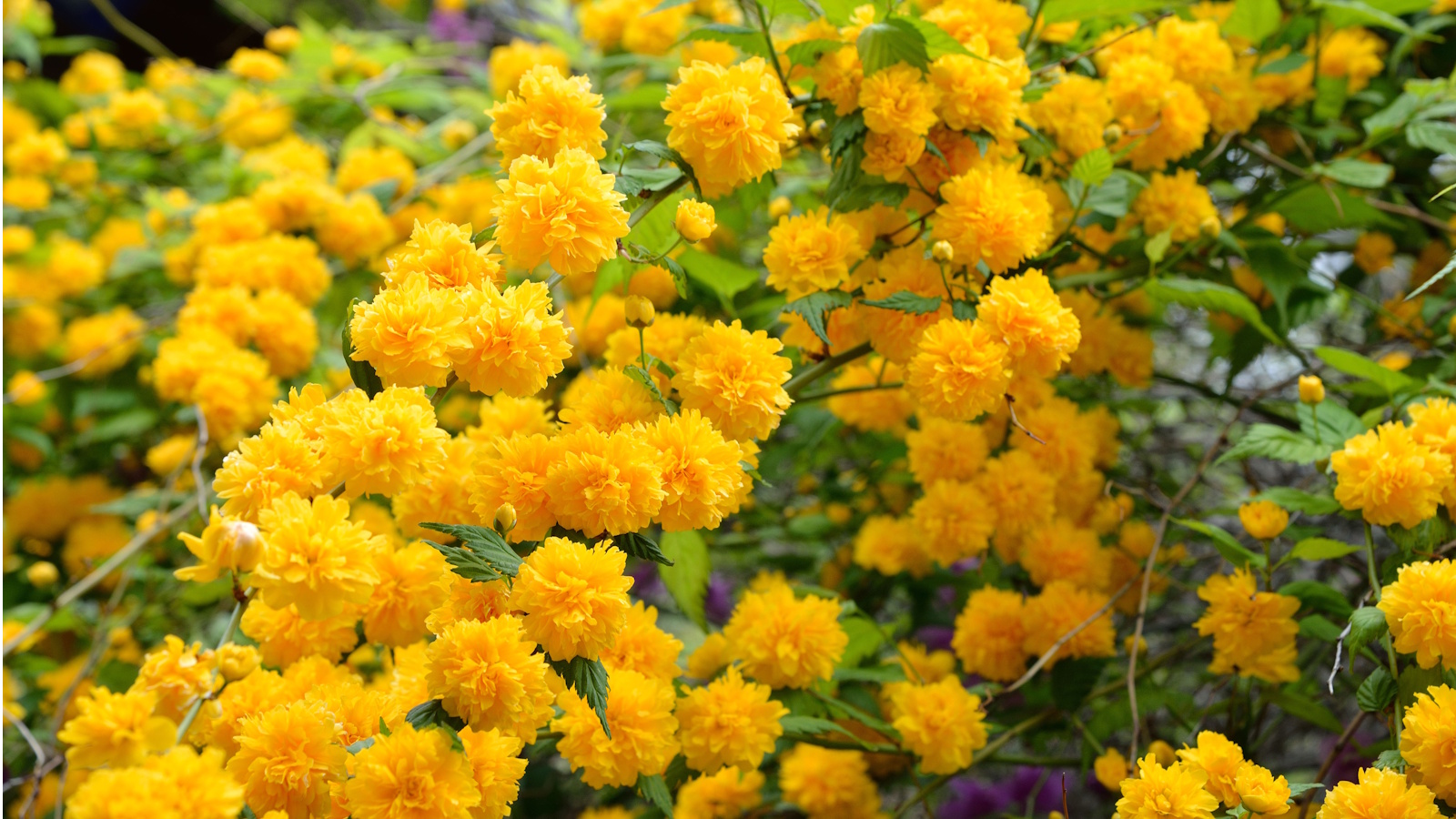
It’s easy to be seduced by spring bulbs as the main source of color and interest as we move out of winter gloom. But it’s good to mix things up with low-growing and mid-height spring-flowering shrubs to add to the seasonal texture and interest in our yards.
There are many great early flowering shrub choices, some that will carry color for up to two months. Plenty bring scent into the garden, too. This gives gardeners the opportunity to embrace the seasonal changes, with focal point shrubs to entice you – and the early pollinators – into your yard as it emerges from hibernation.
Another great advantage of many spring-flowering shrubs is that the flowers really stand out. The tight buds can be beautiful in their own right and they are often carried on the bare stems of deciduous shrubs, appearing before the new foliage unfurls. Here, we take a look at the very best shrubs to choose from for your spring garden.
12 spring-flowering shrubs for seasonal blooms
Try planting for different stages of your spring garden – early, mid and late – and, as the buds start to break it really is like a symphony of spring, bringing waves of color into the garden as the season warms up.
1. Forsythia x intermedia
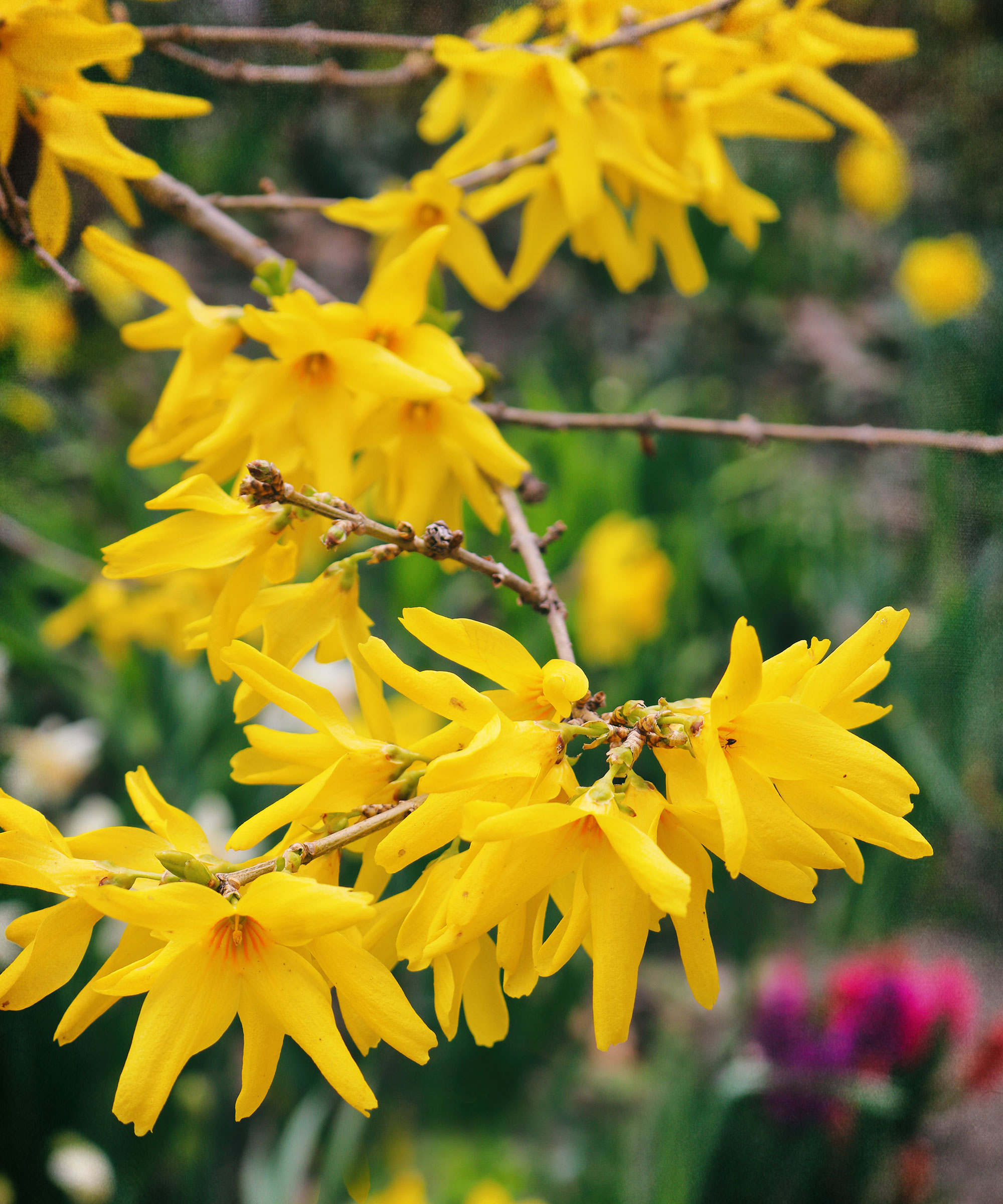
Yellow forsythia flowers are a welcome sight in spring
- Best for: Spring flowering hedges and borders
- Height: 6ft
- Spread: 6ft
- Hardiness: US hardiness zone 3 to zone 5
The intense golden flowers of forsythia make a truly brilliant display in early to mid-spring and are guaranteed to lift winter-weary spirits. Plant them mid border as a focal point, or as a tightly clipped hedge. Forsythia are perfect flowering shrubs for full sun.
There are many to choose from with variations in height and habit. Forsythia Show Off is just one of many perfect for hedging. It’s a compact French cultivar with larger flowers tightly packed on the leafless branches. Meanwhile, Nature Hills recommends Forsythia x intermedia 'Meadowlark' saying it’s good for areas with late frosts that might damage early spring blooms.
'Prune forsythia immediately after flowering to maintain a compact shape and encourage more vigorous growth the following year,' garden expert at Yardwork Michael Clarke advises. 'Forsythias bloom on old wood, so it’s important to prune them just after they finish flowering in early spring. This helps to avoid cutting off potential flowers for the next season and ensures the shrub maintains a healthy structure,' he explains.
Design expertise in your inbox – from inspiring decorating ideas and beautiful celebrity homes to practical gardening advice and shopping round-ups.

Michael Clarke is the founder of Yardwork and Pulled, the online platforms for everything home and garden. He has a degree in landscape architecture and horticulture from the University of California Davis. He was previously the founder of a landscape development and maintenance company.
2. Ribes sanguineum
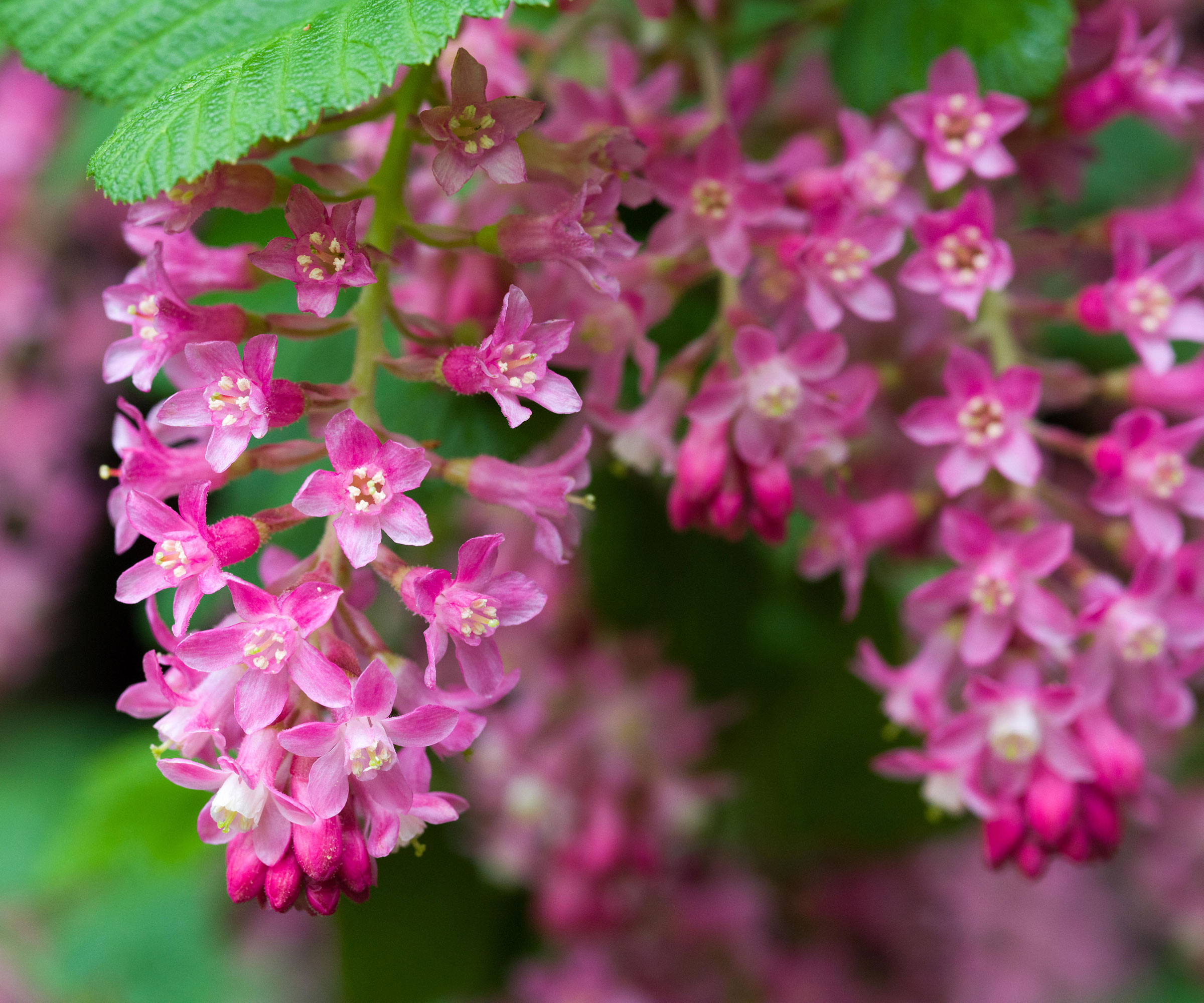
Ribes sanguineum 'Pulborough Scarlet'
- Best for: Naturalized planting areas and shady mixed borders
- Height: 10ft
- Spread: 6ft
- Hardiness: US hardiness zone 6 to zone 10
The flowering currant is a real joy, with raspberry-colored drooping flower clusters adding to the spring fanfare, and berries following in the summer that are great for cooking with.
It’s native to the Western USA, so ideal for supporting wildlife such as hummingbirds, bees, moths and butterflies and for adding to a woodland-style garden. It’s very drought and shade-tolerant, too, and it makes a good hedging plant.
One warning is to avoid planting near pines as it can host the white pine blister rust spore. Try cultivars such as ‘Pulborough Scarlet’ or the white variations ‘White Icicle’ or ‘Elkington’s White’.
3. Hamamelis x intermedia ‘Jelena’
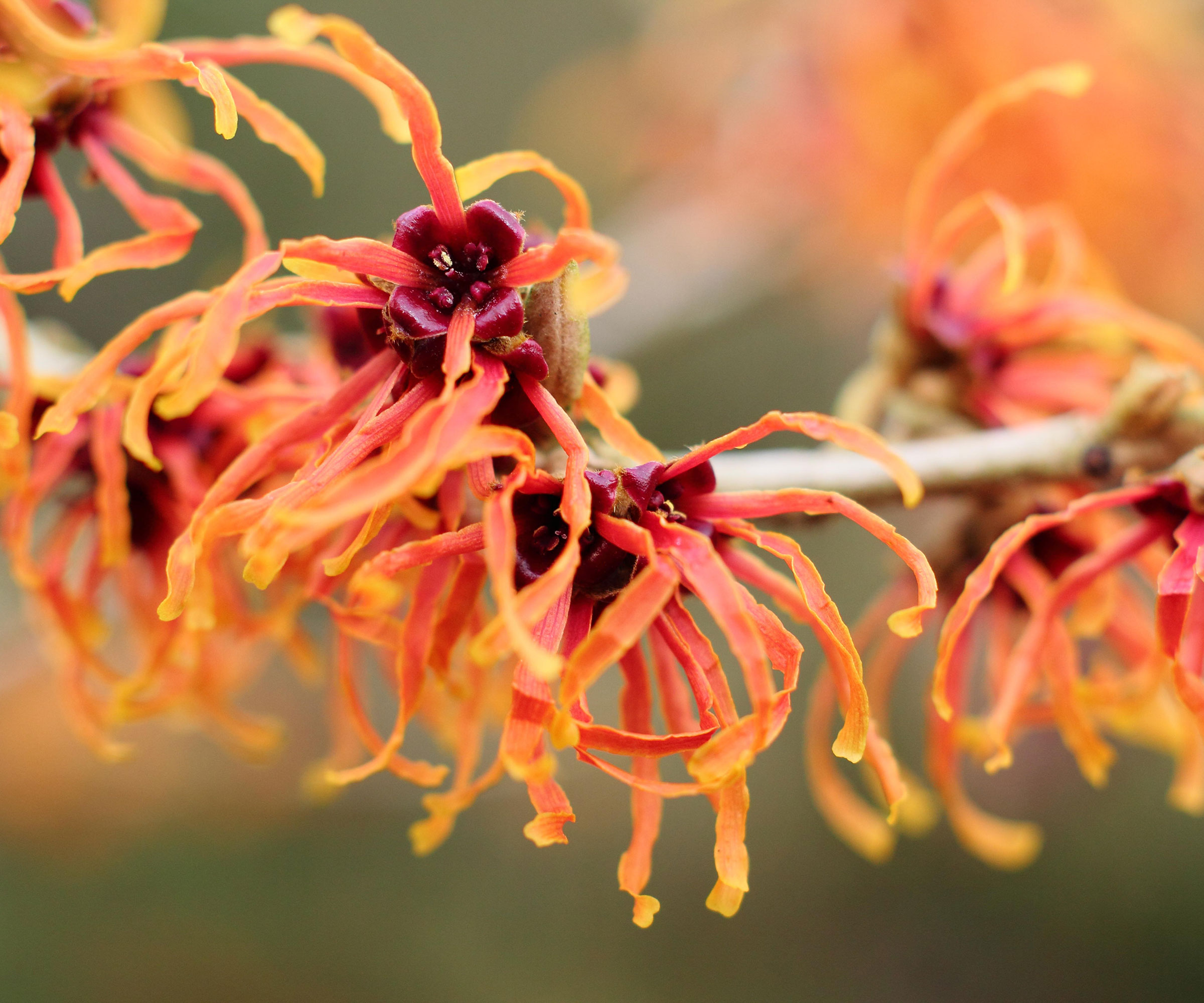
The vibrant orange flowers of 'Jelena' can appear as early as mid winter
- Best for: Transition from winter to spring color, underplanting with first spring bulbs such as snowdrops and crocus
- Height: 13ft
- Spread: 13ft
- Hardiness: US hardiness zone 5 to zone 9
Many witch hazel varieties start blooming in mid-winter, but have a long flowering season taking borders through into early spring. Their unique yellow blooms are also highly fragrant.
'Grow witch hazel in a sunny location with well-drained soil since these shrubs produce the best blooms in full sun,' Michael advises. 'You should also be sure to avoid heavy clay soil types that hold too much moisture, as this can lead to root rot,' he adds.
There are many witch hazels to choose from, including Vernal Witch Hazel, available from Nature Hills.
4. Magnolia stellata
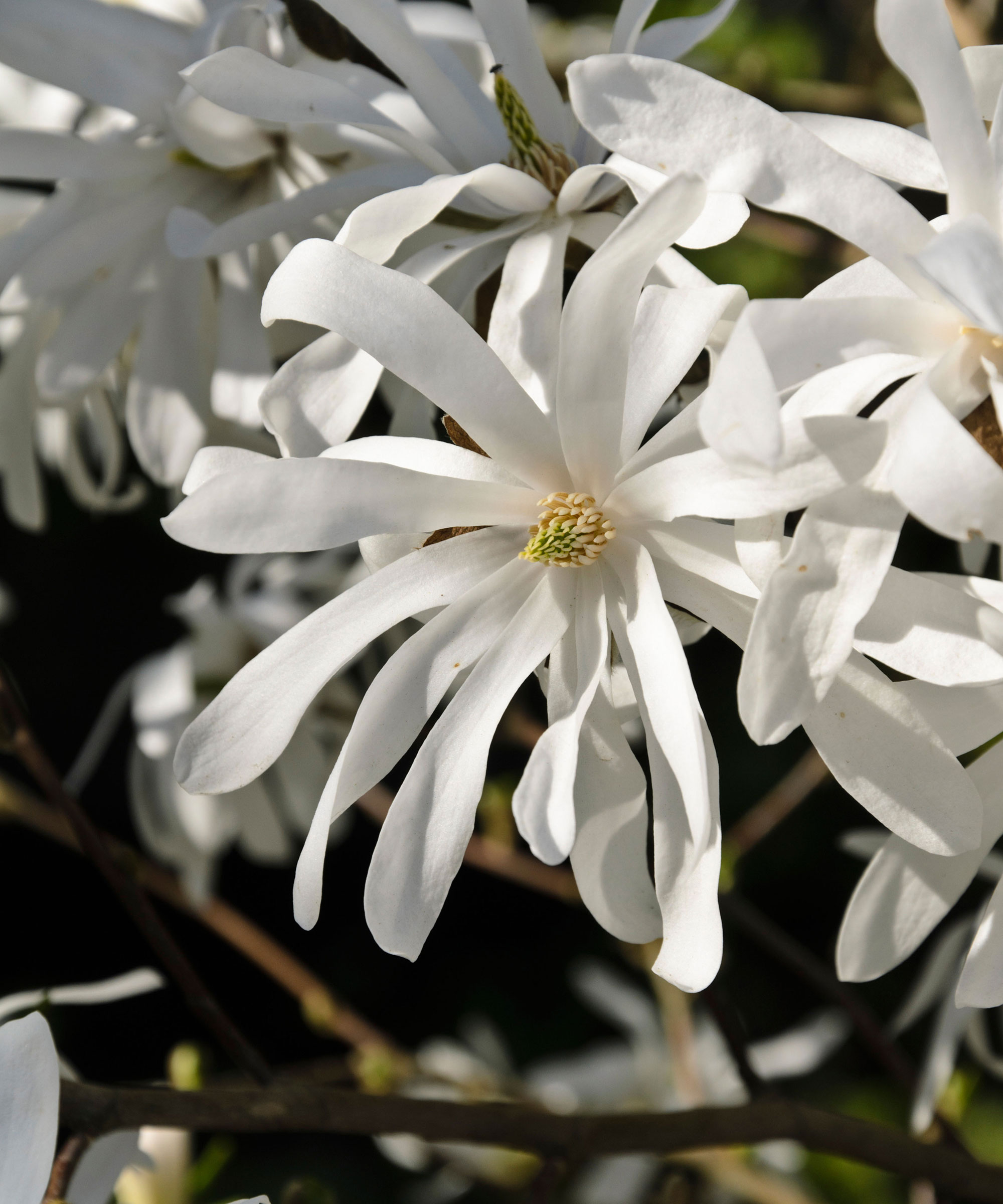
Magnolia stellata 'Royal Star' is a popular choice
- Best for: small to medium gardens, in large containers, or as a focal point in a border
- Height: 5-8ft
- Spread: 15ft
- Hardiness: US hardiness zone 4 to zone 9
Although most magnolias are definitely in the tree category, stellata is among the smallest and so sneaks in as a medium to large shrub, making it a good choice as a shrub at the front of your house or in a small backyard.
It’s one of the earliest magnolias to bloom and justifiably popular, so it’s hard to believe that it’s currently on the endangered species list of the International Union for the Conservation of Nature.
Try M. stellata ‘Royal Star’, ‘Centennial,' the pink flushed ‘Jane Platt,' or New Zealand bred 'Genie’ for its second flush of blooms in midsummer.
Don't forget to prune your magnolia tree or shrub when it needs shaping.
5. Edgworthia chrysantha
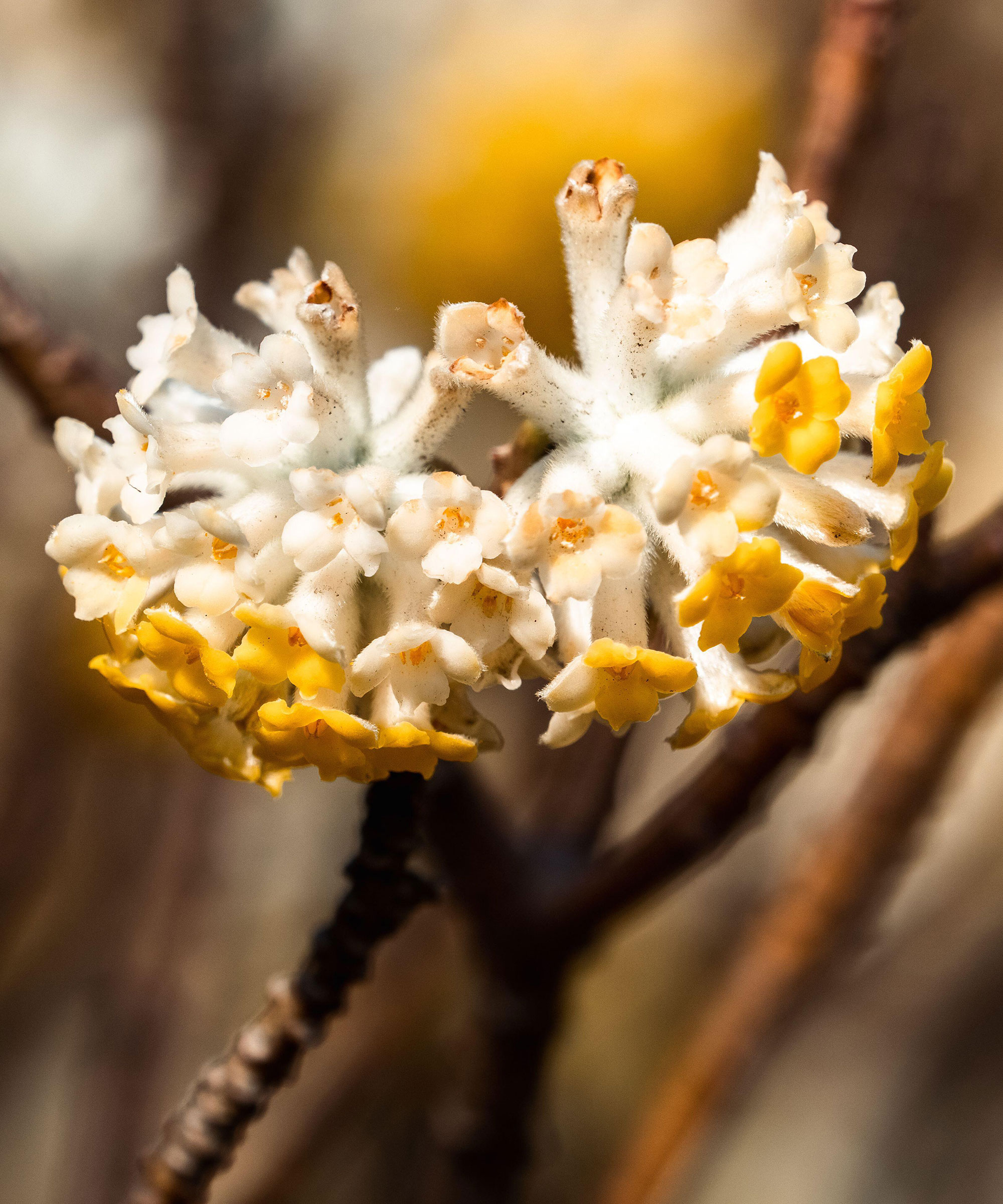
Edgeworthia should be planted in a sheltered spot
- Best for: focal points and mixed borders, good for underplanting with bulbs
- Height: 5ft
- Spread: 5ft
- Hardiness: US hardiness zone 7 to zone 10
Also known as the paper bush, Edgeworthia starts flowering as early as February, and continues through to April in cooler areas. The blooms appear at the tips of bare stems and fade as the leaves appear.
Native to the Himalayan Mountains and China, Edgeworthia is hardy to just below freezing, but requires a sheltered spot. It’s quite compact, with a really attractive open habit, that looks good in borders, underplanted with spring bulbs.
Notable cultivars speak for themselves, with ‘Red Dragon’ having brilliant orangey blooms and ‘Grandiflora’ having much larger floral clusters.
'It’s important to plant these shrubs in a sheltered spot, as the flowers bloom early in the season and can be damaged by late frosts or strong winds,' Michael advises.
Shop shrub care essentials
6. Viburnum carlesii

Viburnum carlesii features eye-catching white blooms in spring
- Best for: mixed borders and focal points
- Height: 6ft
- Spread: 6ft
- Hardiness: US hardiness zone 4 to zone 7
Viburnums offer some fantastic choices for winter plants and, as we change seasons, Viburnum carlesii, brings glorious spicy, vanilla-scented, white blooms from March to May.
It’s a great garden shrub, suitable for mixed borders in sun or part shade. Plant in rich, well-drained soil and keep well watered as viburnums aren’t a great choice for drought-tolerant planting.
'These shrubs come in various sizes, so you can use it as a garden privacy shrub, large foundation shrub or in the mid layer,' says garden designer Laura Janney.
Plant in pairs to encourage cross pollination for fall berries. For viburnum pruning, V. carlesii only needs minimum trimming after flowering to keep it in shape.
Explore other viburnum varieties available at Nature Hills.
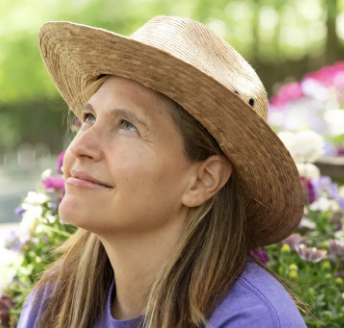
Laura is the Founder and Owner of The Inspired Garden. A winner of the 2024 Houzz Design award, Laura has over 20 years of experience in gardening and working with clients designing beautiful gardens. With multiple courses under her belt, Laura would make a great resource on all things gardening.
7. Kerria japonica

You'll need to keep on top of pruning to keep the growth of kerria japonica shrubs in check
- Best for: Screening and height, informal boundaries
- Height: 10ft
- Spread: 6-10ft
- Hardiness: US hardiness zone 4 to zone 9
The delightful yellow pompom flowers held on long, arching stems can’t fail to bring an explosion of spring happiness to the garden. Great for planting along boundaries, kerria looks good accompanied by evergreen bamboos, and adds spring color to contemporary design looks.
'Despite its elegant styling, it is a tough shrub that can thrive in many conditions and has a habit of spreading,' notes Drew Swainston, qualified gardener and gardens content editor at Homes & Gardens.
'Prune after flowering, as it blooms on the previous year’s wood, and remove any suckers to keep it controlled,' he advises. Use essential pruning tools for this task, like these branch trimmers from Amazon.

Drew qualified as a journalist and wrote for many websites and publications, before studying for a horticulture qualification. He worked as a professional gardener for several years, specializing in kitchen gardening. He's now bringing his expertise and passion to Homes & Gardens as a member of our team.
8. Daphne odora
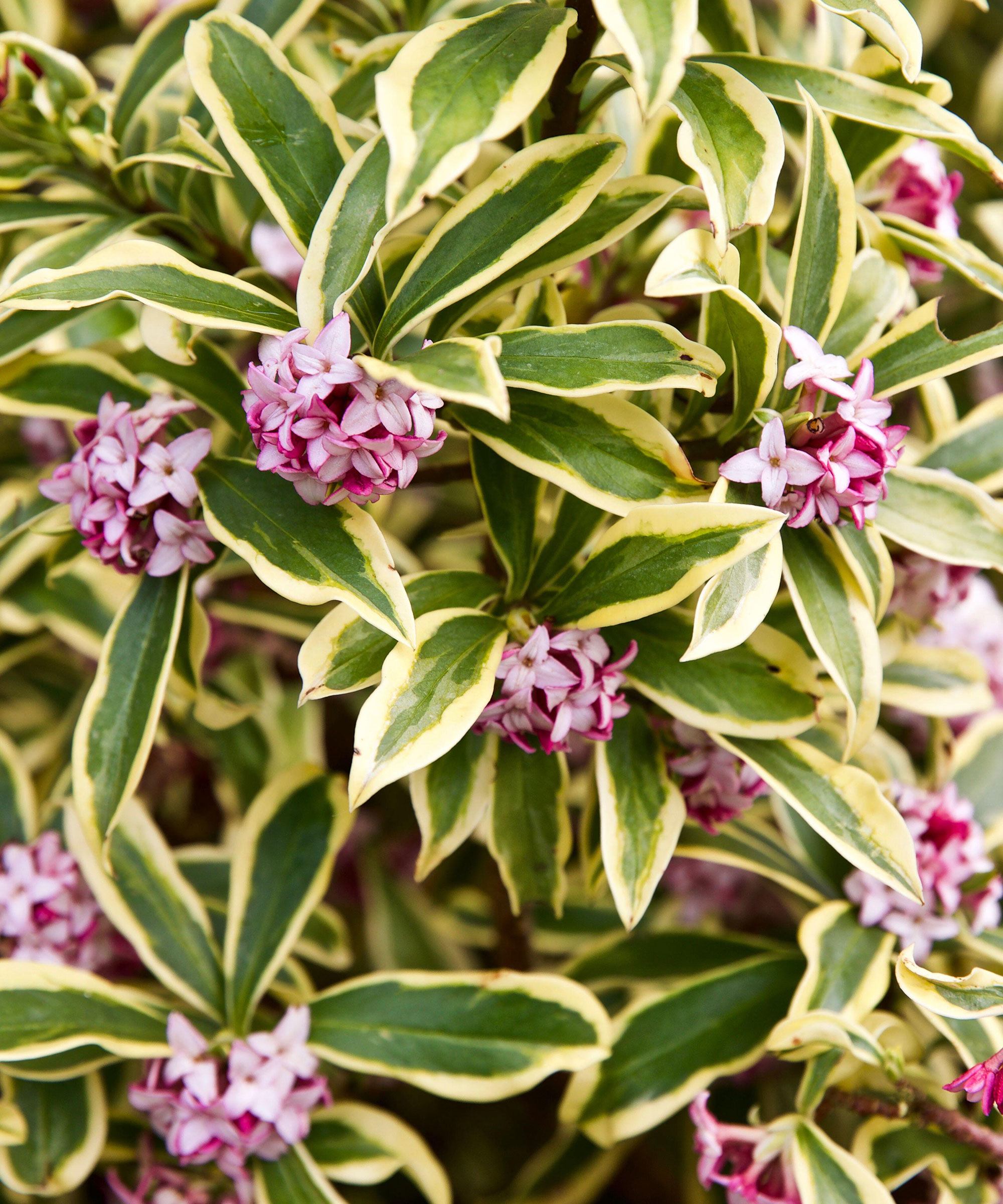
Daphne 'Aureomarginata' is known for its strong scent
- Best for: shady areas, scented blooms and evergreen structure
- Height: 4ft
- Spread: 3ft
- Hardiness: US hardiness zone 6 to zone 10
In winter, the scent of the first Daphnes hits you out of the blue, with ‘Aureomarginata’ being among the most potent of the early flowering shrubs. These clusters of gorgeous pink, fragrant blooms will continue through to spring, a magnet for early pollinators.
D. odora is a compact evergreen shrub, great for borders and pots. Nature Hills recommends ‘Eternal Fragrance’ for its long flowering period and dark green foliage. For more conventional glossy green, non-variegated foliage you can also try ‘Sweet Amethyst’.
It's also low-maintenance to have this spring-flowering shrub in your yard, as it makes the list of shrubs to never hard prune.
9. Chaenomeles x superba

Certain varieties of flowering quince are ideal for growing up a wall or fence
- Best for: boundaries
- Height: 5ft
- Spread: 6ft
- Hardiness: US hardiness zone 5 to zone 9
With bare stems covered in flowers resembling apple blossom, Japanese flowering quince is delightful in early spring, taking center stage in the lull before other flowers burst.
The blooms continue for several weeks and while C. speciosa is taller and good for training against a garden wall or at the back of a border, the more compact japonica and x superba varieties make good low-growing hedges.
'While it can tolerate a range of soil types, it will bloom more profusely in sunny spots with slightly acidic to neutral soil,' says Michael Clarke. For this reason, you may want to seek methods to make your soil more acidic.
There are many different varieties to choose from in shades from apricot and white through to pink and red. Notable x superba cultivars include ‘Pink Lady’.
10. Loropetalum chinense
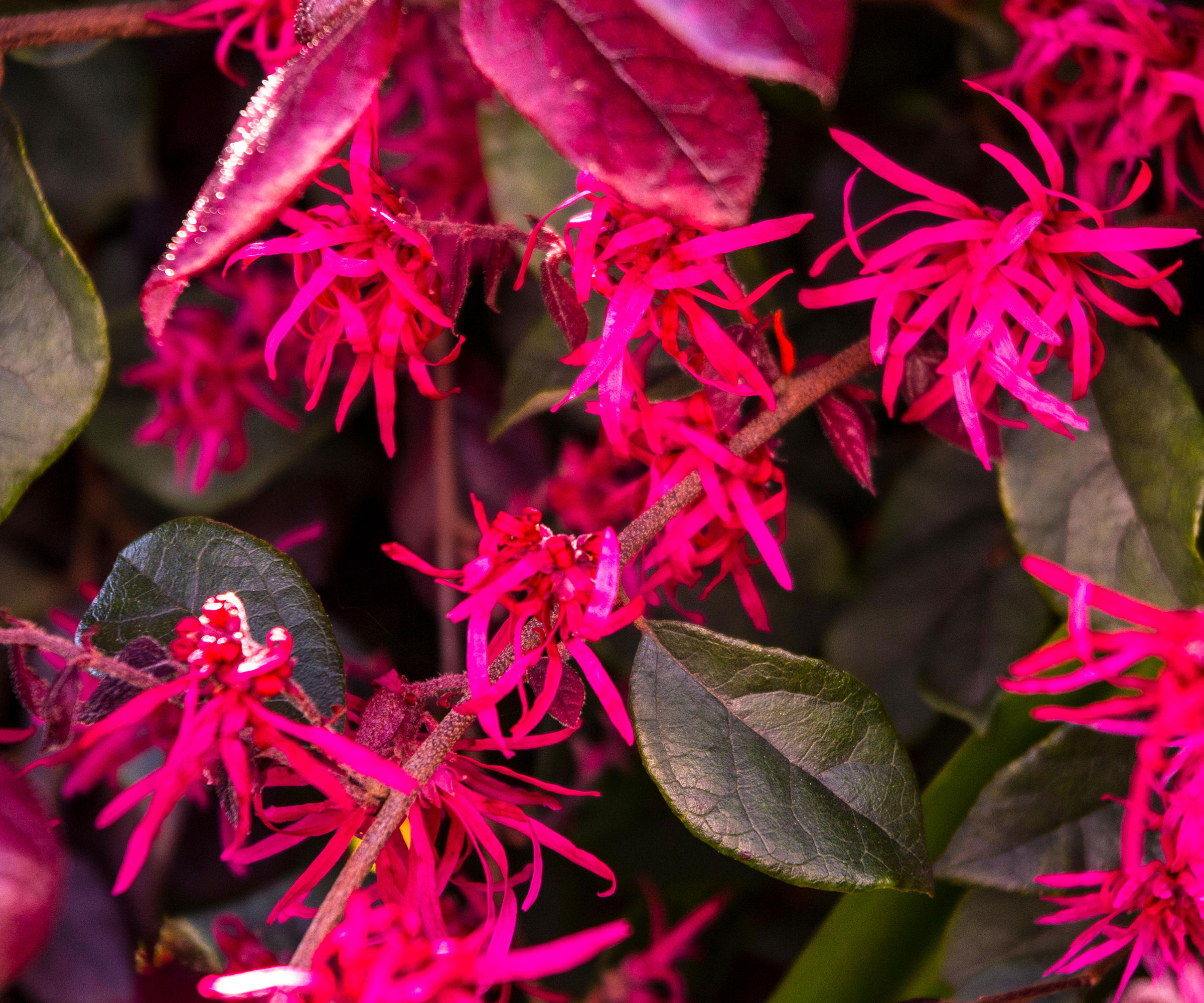
Loropetalum chinense 'Jazz Hands' combines evergreen foliage with unusual purple/pink flowers
- Best for: containers, edging borders and paths
- Height: 3ft
- Spread: 3ft
- Hardiness: US hardiness zone 7 to zone 10
Loropetalum is relatively new to home gardeners who have yet to discover the amazing all-year interest this evergreen shrub brings. In addition to its compact habit and evergreen foliage, in spring it’s covered in clusters of ribbon-like flowers.
While the classic dark green foliage with white flowers combination is elegant, it’s the purple-leaved varieties, ‘Ever Red’ (available at Nature Hills), Jazz Hands’ or ‘Purple Diamond’, that add a new depth to spring planting. The rich foliage and magenta pink flowers are wonderfully vibrant and make a great contrast with the lighter spring colors of bulbs and early perennials.
11. Pieris
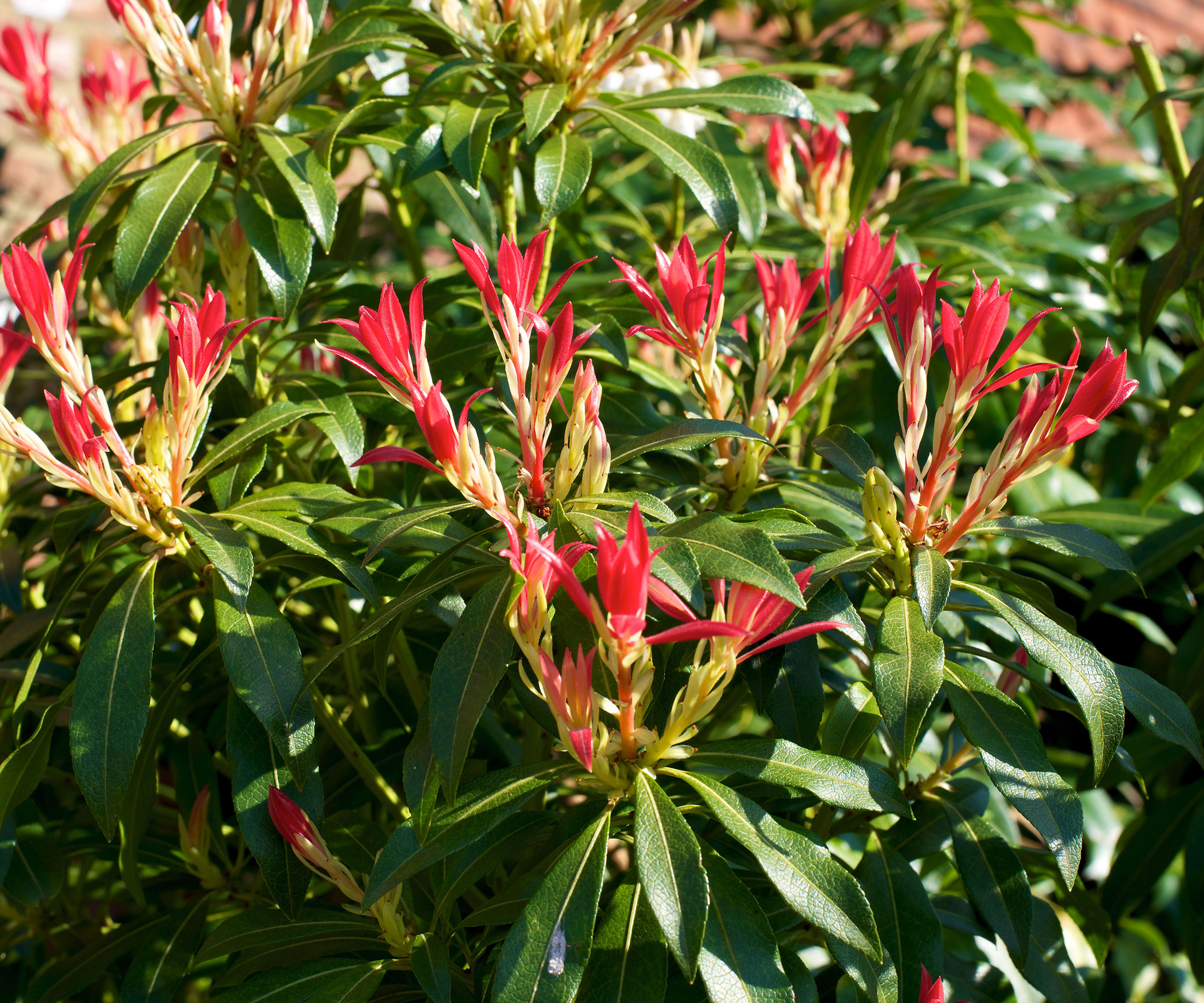
As well as vibrant flowers, Pieris japonica 'Red Head' has interestingly colored foliage
- Best for: acid soils, mixed shrub borders
- Height: 5ft
- Spread: 3ft
- Hardiness: US hardiness zone 5 to zone 8
Pieris are a valuable evergreen in any backyard, and in spring the white bell-like flowers really light up the garden, contrasting with the glossy foliage.
They are a magnet for early pollinating bees and other insects. Pieris japonica ‘Red Head’ has the added spring feature of tender new leaves that emerge bronzey-red.
While the japonica varieties are most common, look out for native North American Pieris floribunda with large clusters of white flowers. It hails from the south-eastern states, so a great choice if you are looking to add to a natural, wildlife garden planting scheme.
12. Azalea
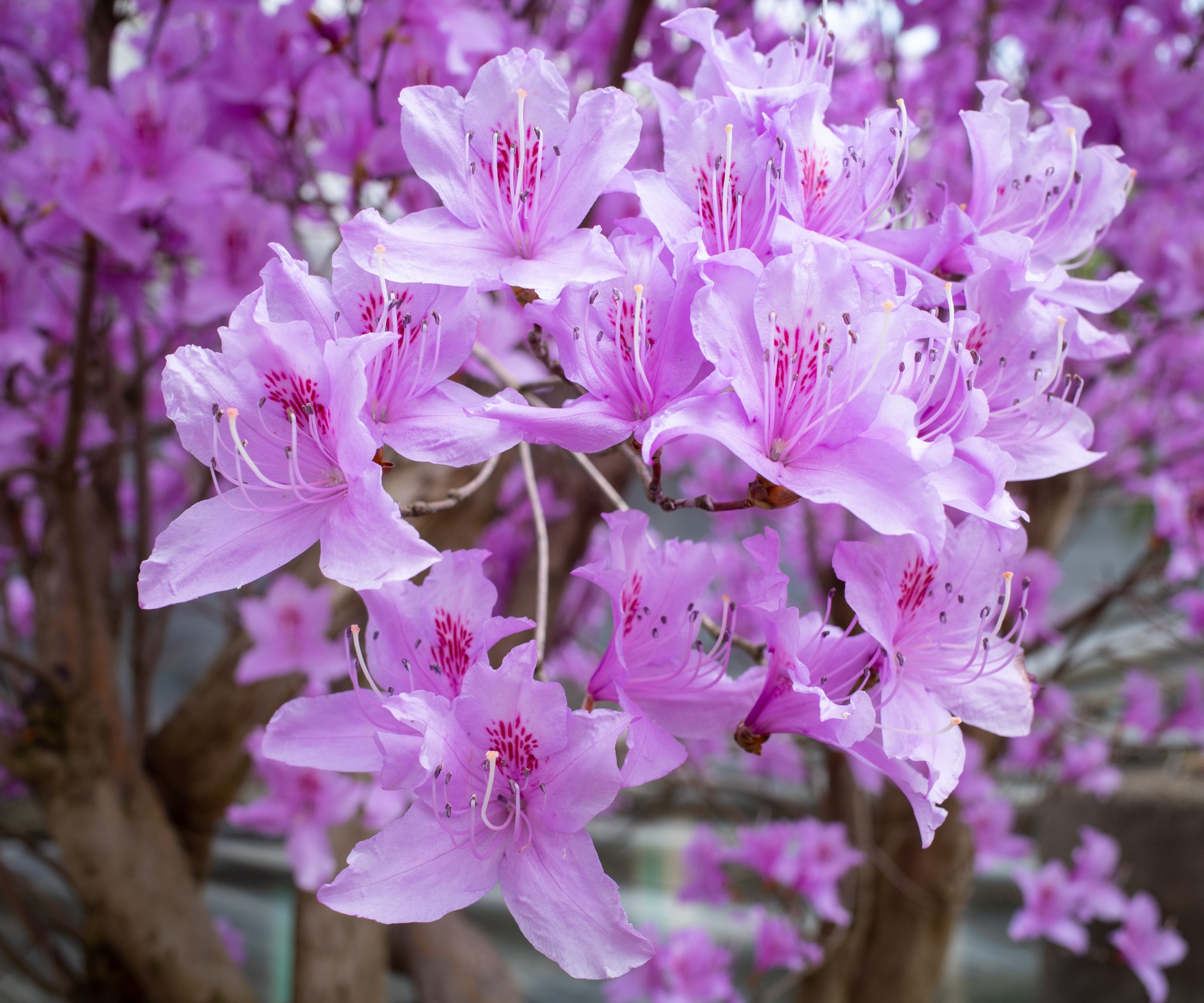
- Best for: showy, part-shade blooms
- Height: 6ft
- Spread: 6ft
- Hardiness: US hardiness zone 3 to zone 9
With so many types of azalea, there's one for every backyard. Varieties like 'Hino-Crimson' (available at Nature Hills) bloom in early spring, while 'Girard's Crimson' (at Nature Hills) flowers from late spring into fall. Some varieties are even evergreen, offering green foliage throughout the year.
'Azaleas tend to do well with morning sun and afternoon shade,' says Laura Janney. 'They don't like to get too hot, but likewise don't need as much water as other shrubs,' she adds. This is worth noting when taking a look at how to care for azaleas in summer.
Take care to also prune azaleas immediately after their flowers fade. When doing so, take azalea cuttings to propagate.
FAQs
Which spring flowering shrubs can grow in pots?
Choose the compact varieties for example, the slender Deutzia gracilis, a mounded shrub that is a prolific bloomer. Also, the dwarf fothergilla Fothergilla minor - white flowers appear before the blue-green leaves. Many azaleas can also be grown in pots, as can lilacs, and viburnums.
Planting shrubs that will flower throughout spring is a wonderful way to introduce some much-needed color to any outdoor space in those early days after winter. It ensures there is something vibrant and interesting to look at before the rest of the garden bursts into bloom in the warmer days of late spring and summer. Just make sure not to neglect other essential spring gardening checklist tasks when getting these shrubs in the ground.

In her years of gardening, Camilla has designed planting schemes for gardens large and small in and around London, written about plants and how to grow them, and worked on BBC gardening TV shows in the UK. She's also works as a therapeutic horticulturist, teaching growing for wellbeing and mental health.
- Tenielle JordisonGardens Content Editor


